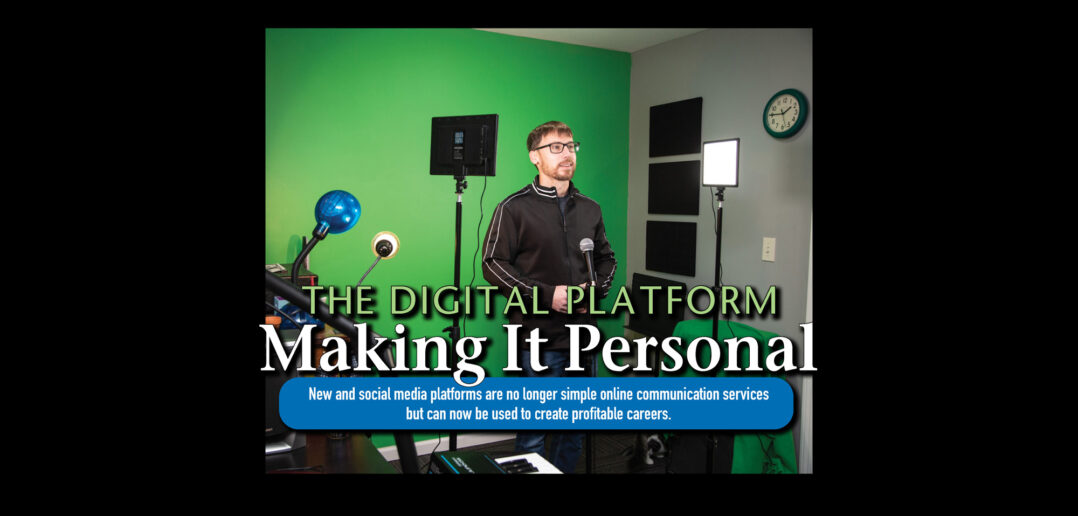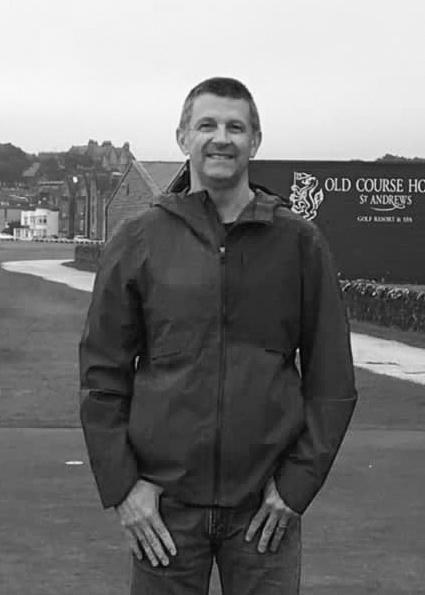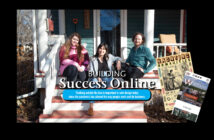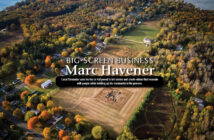| story by | |
| photo by | Steven Hertzog |
| OPEN A PDF OF THE ARTICLE |
New and social media platforms are no longer simple online communication services but can now be used to create profitable careers.
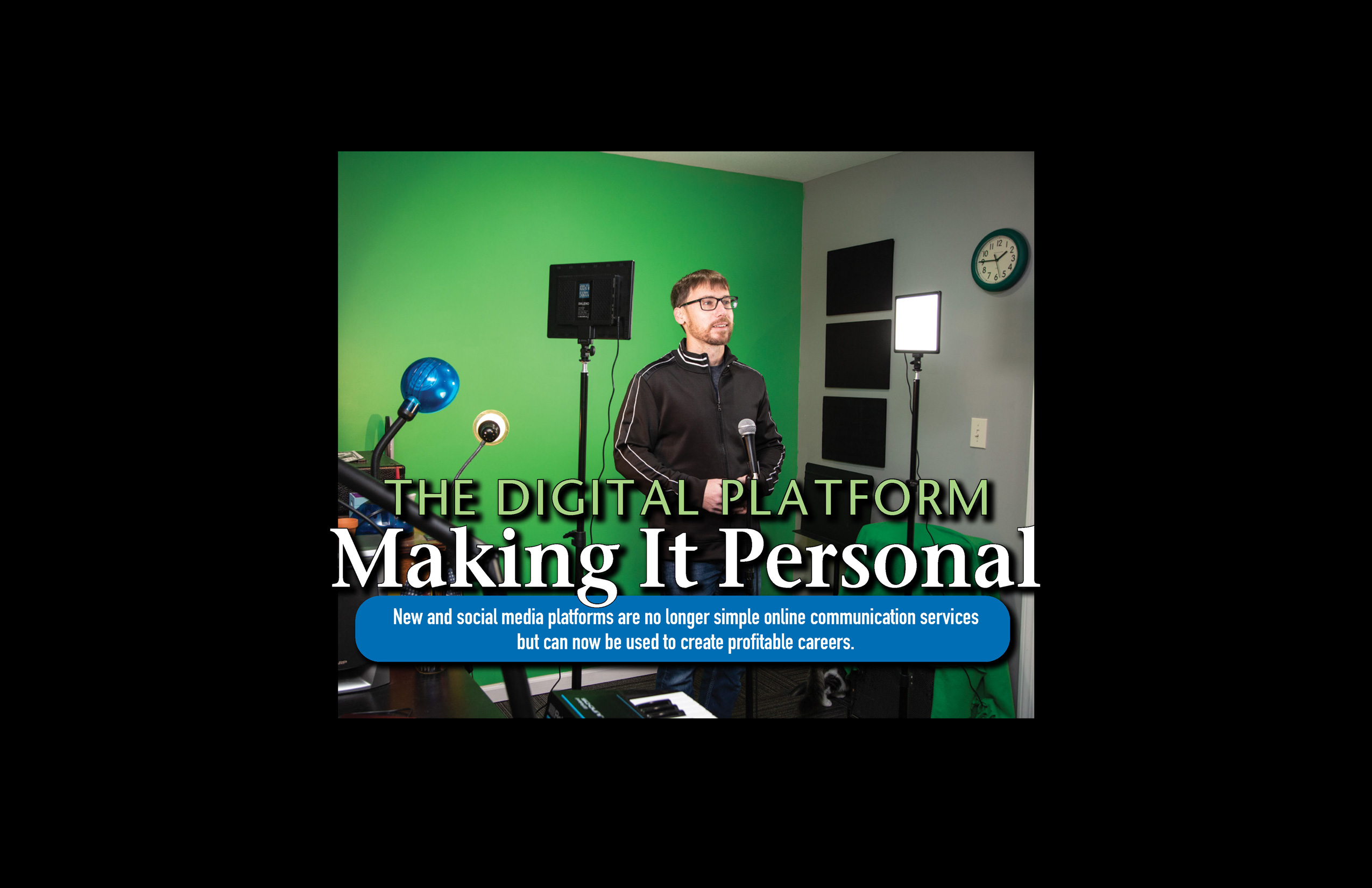
The Digital Platform – Making it Personal
Matt Beat can’t help but chuckle when YouTube is mentioned to him as “new media.”
After all, Beat has been posting content to the video-sharing website since 2006, when he was promoting his and his brother’s band, Electric Needle Room. Before that, he was using what today are considered antiquated platforms—MySpace and Friendster—trying to spread his music to the masses. YouTube doesn’t seem very new to him.
Here’s what is new. What started as a small way to promote his band and, later, as a teaching aid for his job as a middle school social studies teacher today has become a stand-alone six-figure income as “Mr. Beat,” a vast series of educational, historical and political videos receiving more than 150 million views worldwide.
“My first account on YouTube was for our band,” Beat says. “I remember it was a big deal to post a video back then. I started “Mr. Beat” in 2009 and went public in 2011. It was meant to be a teaching aid. I first monetized my channel in 2013, and I’d typically make an extra $20 for a month.
“It really picked up around 2018, and I started taking it more seriously. 2020 was a really good year. I made more money than I did teaching.”
Now that he’s made “Mr. Beat” his full-time gig, Beat has brought his wife, Shannon, on board as his business manager.
“It’s not something I ever thought we’d be doing,” Shannon Beat says. “But if you know Matt, it’s not surprising. If he starts something, he sticks with it.”
In this age of technology, Beat is one among millions around the world who have discovered that new or social media, be it Facebook, Instagram, TikTok or lesser-known sites like Twitch, Discord and Rumble, can be utilized to build lucrative careers as content providers or influencers. Several of those using social media as a business or to help their business reside in the Lawrence area.
A couple of those social media users include Ian Weaver, a longtime sketch comedy writer who is working to build viewership for his “Geeks Welcome” podcast to a level so that he might make it a full-time pursuit; and Jay Pryor, a longtime Lawrence-area executive coach and motivational speaker, who uses social media to get the word out about the services they provide.
“I prefer to use the term engage, not advertise,” Pryor says. “Back in the day when social media first came into existence, the mantra was, ‘Content is king.’ Just crank out the content. Now we are in a new age of connection, and relationships are more of a focus.
“This new generation really wants to engage. If you want to go deeper, then we can move on from there.”
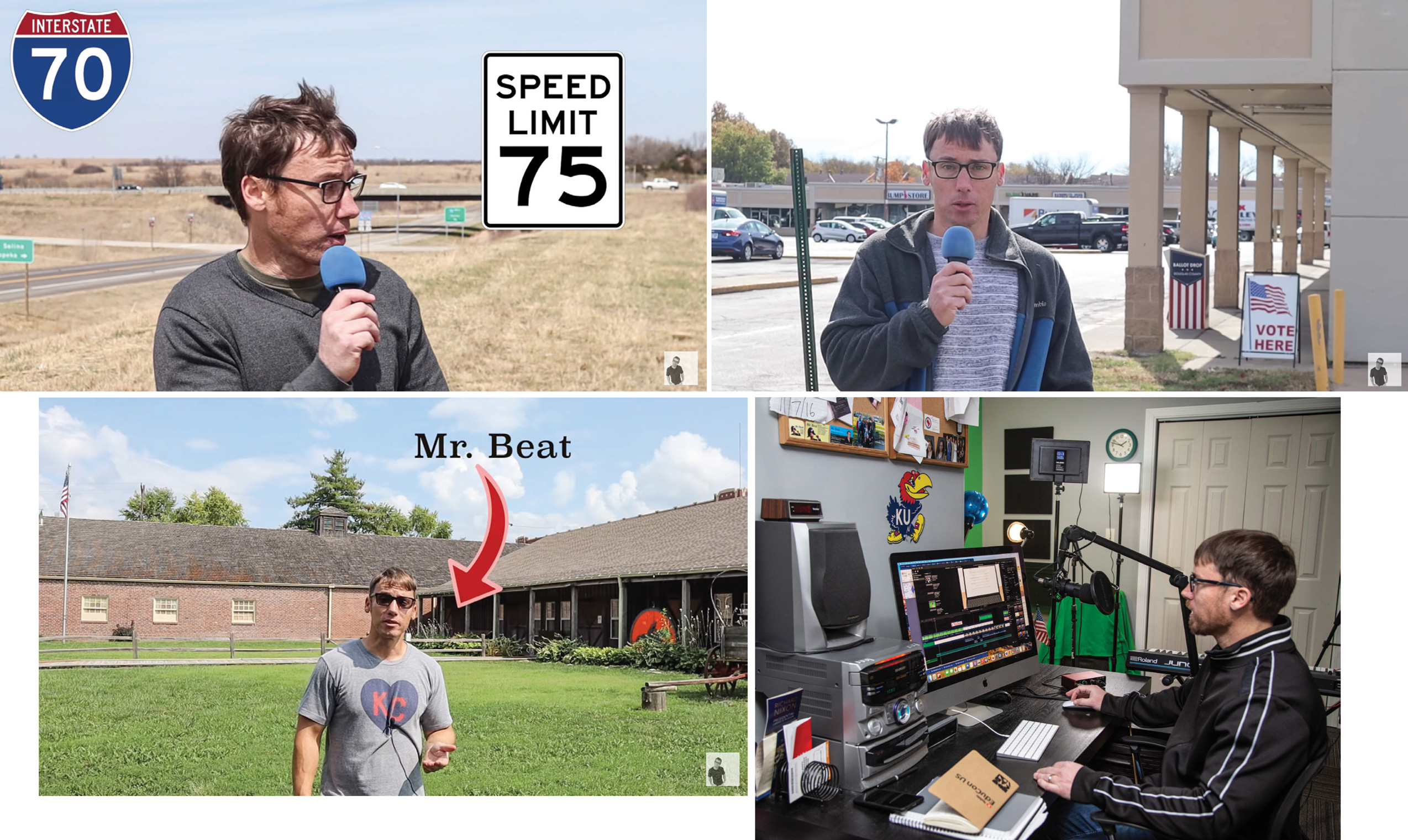
Mr. Beat on location (or is he) and in his studio putting together a new show
Making “Mr. Beat”
In the early 2010s, Beat was a middle school social studies teacher who had to coach tennis and basketball after school and in the evenings just to make ends meet for himself, Shannon and their two young daughters. At the turn of the decade, he discovered students responded well to video learning—watching short, educational videos about subjects ranging from American and world history to politics.
He had some knowledge of video editing and production from the journalism degree he’d earned at the University of Kansas (KU) and from working at TV station KSNT in Topeka. He had the experience of making and posting videos promoting Electric Needle Room on YouTube. So he had the knowledge to begin making his own social studies educational video content. When he started as a student teacher, the videos were strictly for local use—his classes and those of his colleagues.
LOCAL MATTERS
Our Local Advertisers – Making a Positive Impact
“Students were forgiving about crappy editing and production,” Beat says.
Around 2012, YouTube started monetizing content. He says the platform gives 55 percent of ad revenue to creators, by far the most of any of the social media platforms. At first, it didn’t amount to much. He estimates he earns an average of $2 to $3 for every 1,000 views of a video.
“I was just hoping that the videos would supplement my income enough so I wouldn’t have to coach, and I could spend more time with my family,” Beat explains.
Another advantage of YouTube, he adds, is that the platform promotes its creators for free. As he improved the quality and quantity of his videos, he found the number of views increasing rapidly.
“I remember, my first viral video was, “Why is Kansas City in Missouri?” he says. “It was just a little six-minute video, but it did really well.”
Beat published videos about the presidential elections and, one that was particularly popular, “Why Kansas and Missouri Hate Each Other.” He has longer videos where he tries to call every United States senator and every representative in the U.S. House of Representatives. He also has published more recent explainers about the Persian Gulf War of the early 1990s, “Every President’s Biggest Accomplishment” and “How Each President Died.” This informative content Beat keeps entertaining with presentation and production flare.
While 2020 was a good year for him, with everyone sheltering and spending more time watching videos because of the COVID-19 pandemic, 2022 was absolutely banner. From YouTube ad revenue alone, he says he brought in about $150,000. And that’s far from Beat’s only revenue stream. He also posts content on TikTok, Instagram, Rumble out of Canada and Facebook. He also has a Patreon, where subscribers pay him directly to support his content.
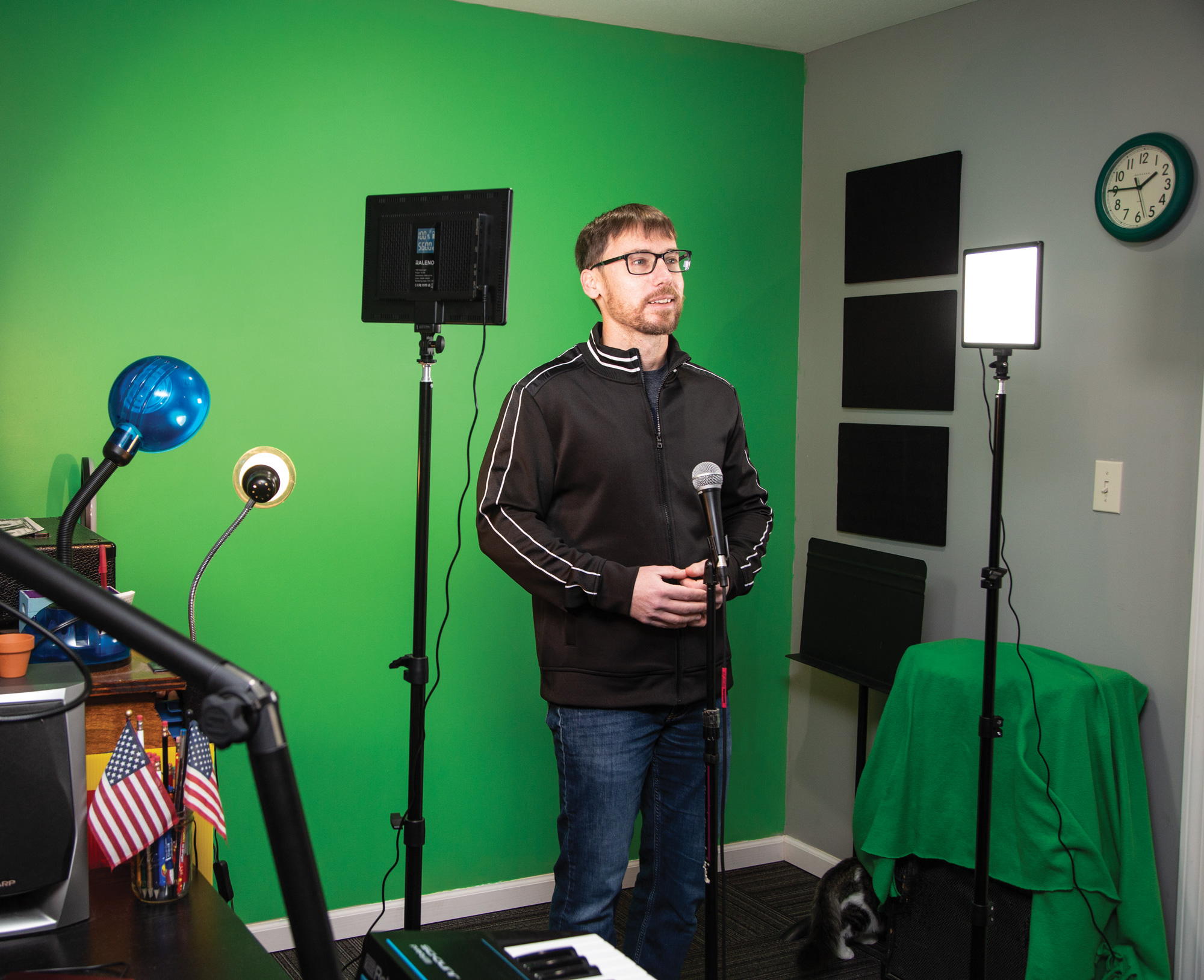
Matt Beat aka Mr. Beats in his home studio recording a podcast against a green screen
In all, Beat has more than 750,000 subscribers and has had more than 150 million views of his content.
“We just try different platforms and see what works,” Shannon Beat says. “We always want to stay up with the times and try out new things.”
For “Mr. Beat,” though, the ad revenue from YouTube is the bread and butter.
“The goal is always growth,” Beat says. “The more impact, the better. I feel like I’m having success if making these videos spreads empathy around the world. People are more hateful about things they don’t know very well.
“Money is a by-product. It doesn’t motivate me. I just want to make an impact.”
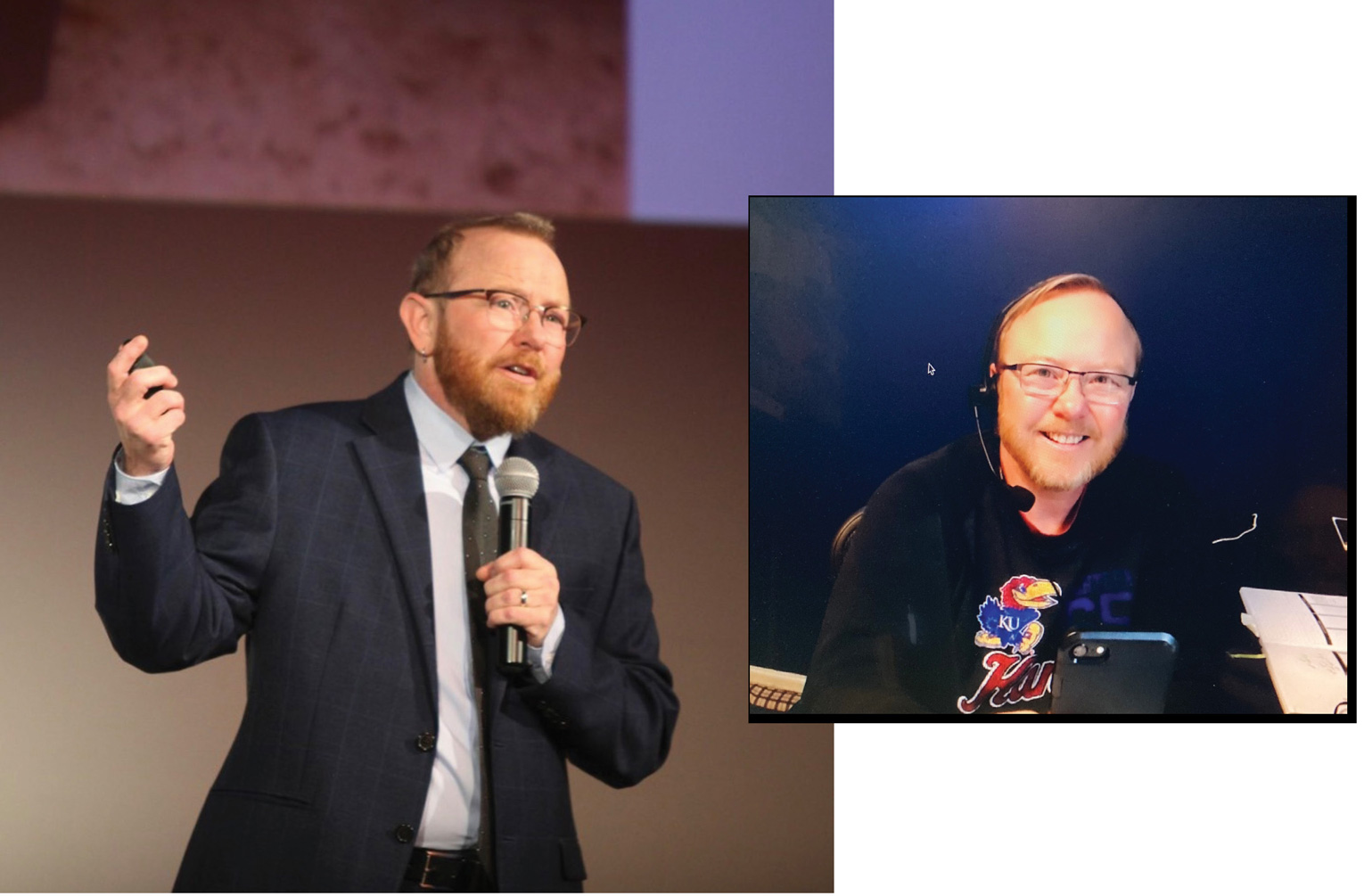
Jay Pryor, coach and motivational speaker
Using Social Media To Promote a Business
Pryor can’t help but be a bit self-deprecating when it comes to leveraging social media for professional gain.
“You can make a lot of money through social media,” they say, adding with a chuckle, “I just don’t know how to do it.”
Still, Pryor uses it quite extensively in engaging a potential audience. While their 16-year-old business might be relatively small, it’s impactful. They published a book in 2013 titled “Lean Inside: Seven Steps to Personal Power: A Practical Guide to Transformation for Women,” which they say sheds “perspective that you have everything in you to succeed. It’s time to look inside more than outside.”
Pryor speaks to executive leaders and teams in business communities, facilitates corporate trainings and workshops, and does keynote speaking around the world. Much of their work focuses on speaking and working with 2SLGBTQIA-plus groups (Two-Spirit, Lesbian, Gay, Bisexual, Transgender, Queer and/or Questioning, Intersex, Asexual and the plus, which reflects the countless affirmative ways in which people choose to self-identify).
Pryor, who transitioned from female to male at the age of 35, takes the experience living as a gender nonconforming person and the insight of how differently women experience the world versus men, and addresses challenges the LGBTQ-plus community faces daily, and how those challenges translate to the workforce. With their own unique methodology, they serve as an advocate and educator for transgender and gender nonconforming people, seeking inclusivity and gender consciousness.
Pryor utilizes Facebook in engaging an audience they say is “older.” LinkedIn is used to engage a more professional audience. They’re trying to get better at using platforms like Twitter and Instagram.
“I’ve hired younger people to help me,” Pryor says.
They also have a YouTube channel—at jaypryorcoaching.com—where Pryor says they’ve averaged putting out a video per week since 2012. They also cohost “The Gender Reveal Party” podcast, which can be found on Spotify, iTunes, Apple, or wherever podcasts are available.
“I’m a speaker,” Pryor says. “The more people who hear me speak, the more stages I get on.
“Facebook and LinkedIn are where I get the most friction.”
They say they also have a membership platform, where people can make a free call and are invited to delve deeper into anything they want to talk about. They say they’ve also looked into apps like Clubhouse and Fireside.
“The way I see it, everything is energy,” Pryor says.
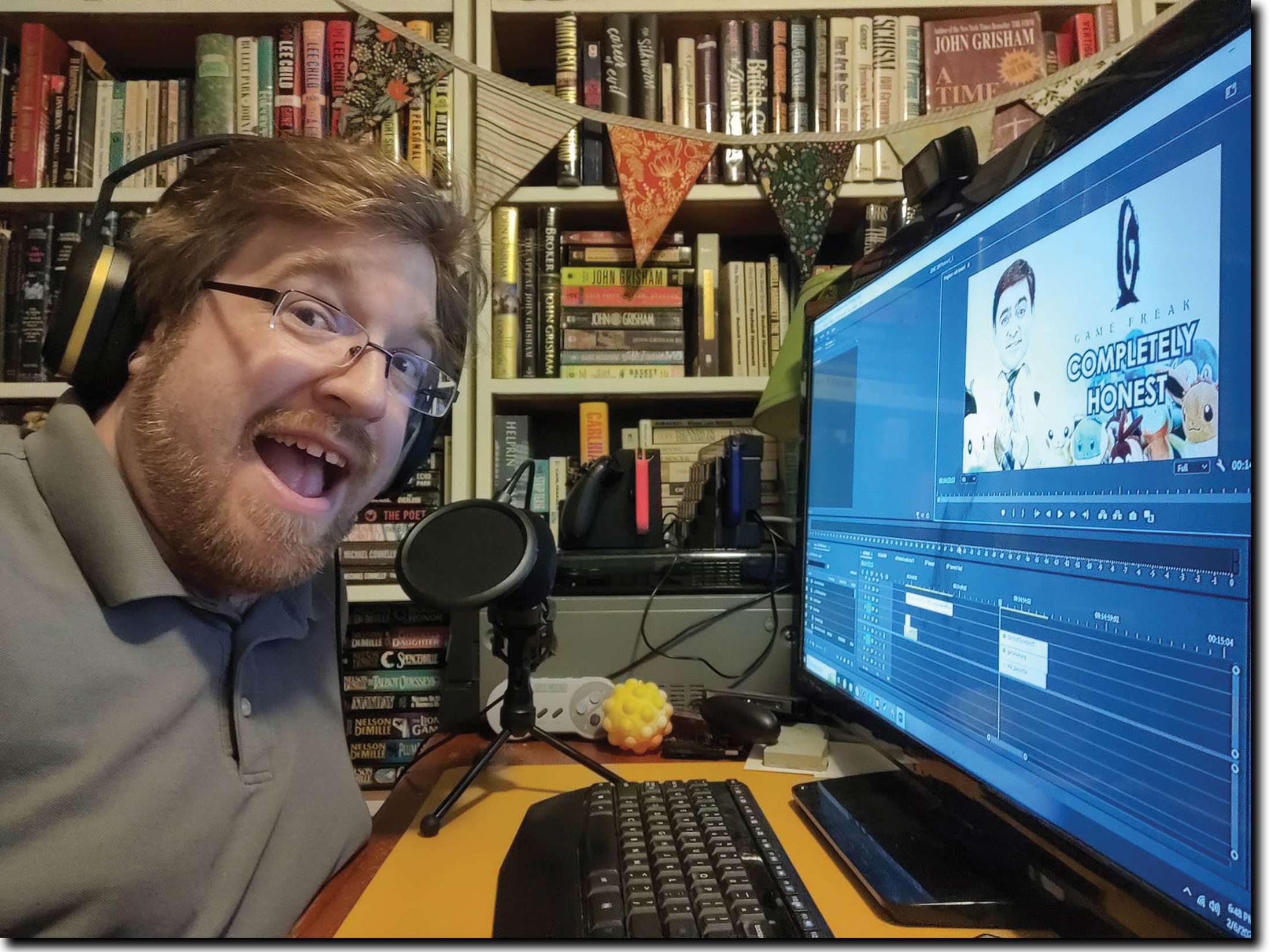
Ian Weaver, “Geeks Welcome”
Geeks Welcome
Ian Weaver has had what could be considered a full-circle experience with YouTube.
A huge fan and proponent of sketch comedy since early childhood, he and some classmates posted what then were rudimentary videos to the platform back when YouTube first got off the ground around 2005. As a film student at the University of Kansas, he got with friends and began writing scripts for a web series, again revolving around sketch comedy.
“Comedy has always been my life,” Weaver says. “My mom and dad showed me a lot of sketch comedy growing up—“Saturday Night Live,” “Monty Python,” things like that. I’ve always had a great love for it.”
Soon after graduation in 2012, that group started filming a series of videos that would become “Gaming Wildlife,” a sketch comedy web series that, at its peak, would have 43 million views and 200,000 subscribers.
Then what happened to a lot of social media businesses happened to “Gaming Wildlife.” While Weaver and his cohorts had the creative side of the business down to a science, that wasn’t the case with the business side. Too many hands were reaching out for too little money. Eventually, “Gaming Wildlife” was no more.
He says he was burned out and needed to step away from the web series business after that. But it wasn’t long before he began reconnecting with a group of friends, and talk of starting a new web series reignited the passion.
“We were able to do this once; I figure we can do it again,” Weaver explains.
The result is “Geeks Welcome.” In what currently is just a few episodes per month, “Geeks Welcome” content can be broken into three series: “The Completely Honest Series,” a parody sketch series of corporate-style talking head videos, the “GW Reacts,” where the group reacts to other sketch comedy groups, and a third series of various comedy sketches. Subscribers currently number around 350, but he says “Gaming Wildlife” also started modestly before catching fire.
Weaver expects to be able to monetize the web series sometime around June of this year. To make ends meet in the meantime, he works part time at the Lawrence Arts Center and as a delivery driver.
“It’s all about being able to express yourself,” he says. “It’s not something you can jump into and expect to be successful right away. You have to take it slowly and build, and cultivate a following. It takes time, but it’s possible. You can build a brand and a successful business off of this.
“That’s what we did before, and that’s what I’m trying to do again,” he says.

